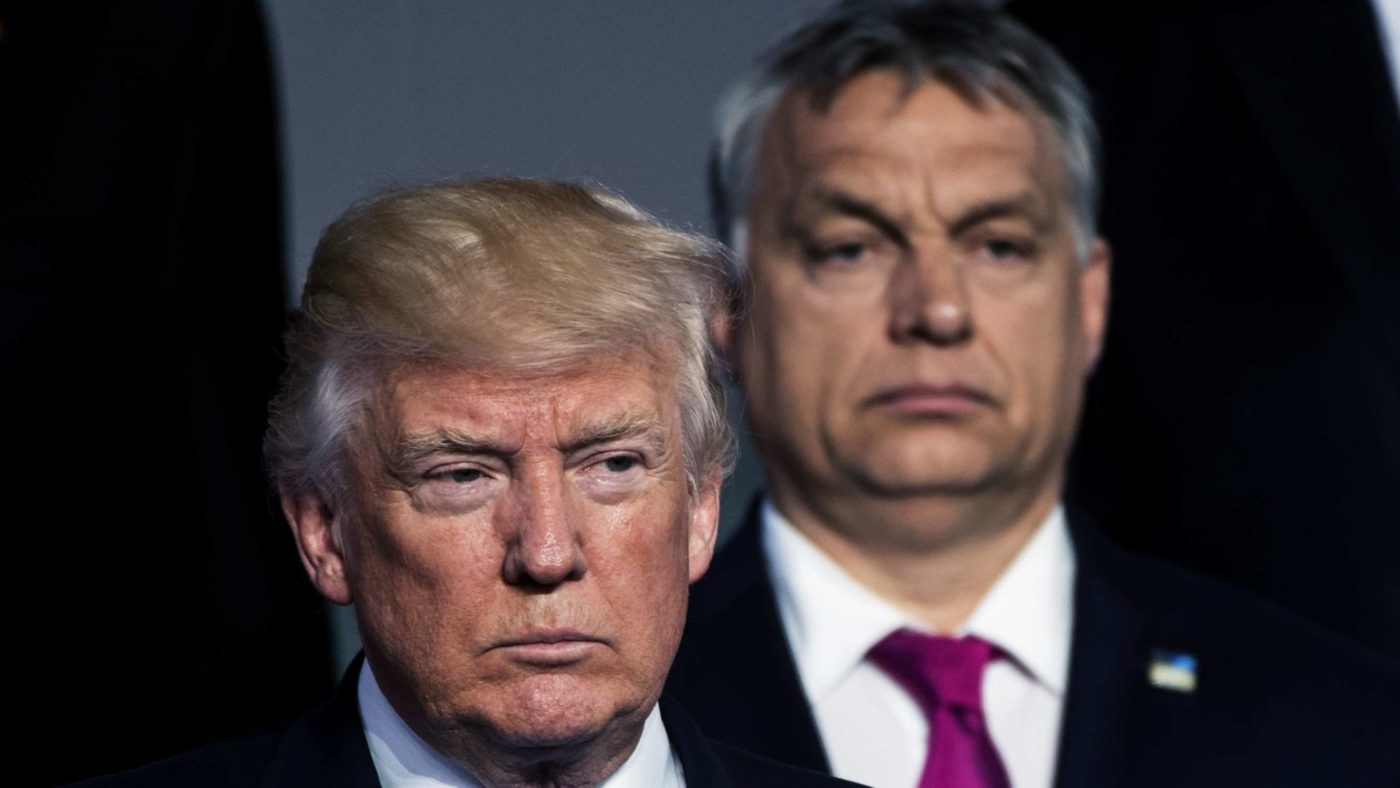As volatile as he is, there are still some predictable patterns in President Trump’s behaviour. By now, we know that he likes to yell and say things that stir up his base. And there are two subjects on which he never hesitates to rail: immigration and the media. Indeed, those are the two topics that have most often ignited political firestorms since he took office.
There is very likely a link between what people believe about immigration and the way they view the media. Trump, certainly no fan of either, routinely undercuts the media with angry tweets and outlandish comments in speeches. He recently broke protocol and pulled the credentials of CNN’s Jim Acosta after another contentious exchange between the two.
When’s he’s not berating reporters, Trump spends a good bit of time promising strong borders and demanding heavier reforms against immigration. In this, Trump is doing nothing new. In fact, we need only look to Hungary to see the kind of populist playbook Trump is working from.
The Hungary-Serbia border has been a mainstay in the international immigration debate for the past few years, and the hundred-mile fence standing between the two nations is a physical manifestation of its fraught history. Last month marked 62 years since the Hungarian Revolution of 1956 began as a national protest against the far-left, Marxist-Leninist government of the Hungarian People’s Republic and grew into an 18-day uprising. Though the regime would rule for over 30 years, the revolution was early evidence of many Hungarians’ rejection of the socialist regime imposed by the Soviet Union after the Second World War.
It took decades, but in 2010, when Hungarians elected Viktor Orbán as prime minister, the country made a bold decision to reject its socialist past. After again claiming victory in 2018, Orbán secured a two-thirds majority in the National Assembly for his Fidesz Party, granting him a great deal of power and control to implement his agenda. Always adept at firing up his base, Orbán found an easy path to victory by beating the drum of hawkish immigration policies.
Much like Trump’s rhetoric around the wall with Mexico, Orbán’s strict immigration policies appealed to rural communities situated on Hungary’s borders. As so often, immigrants became a scapegoat for Hungarians who had not benefited from the post-Iron Curtain liberalisation of the economy – though in truth migrants had little real impact on natives’ economic prospects.
But when the media is run by an anti-immigration government, as is the case in Hungary, half-truths and outright distortions quickly become accepted as truth. Granted, Donald Trump doesn’t control the media, but he criticises them constantly and continues with threats to pull journalists’ credentials.
The extent of Orbán’s mastery of the news in his country is breathtaking, particularly in a supposedly democratic country. Marius Dragomir, the Director of the Center for Media, Data, and Society at the School of Public Policy in Budapest’s Central European University, calculates that fully 90 per cent of Hungary’s media is controlled by the government.
“There are only a few major players left outside Orbán’s control,” Dragomir said. “They did that by controlling the regulatory bodies and the public media in Hungary and by using a select group of powerful oligarchs to buy as many private news media as possible.”
So Orbán’s tactic of limiting both immigration and the free press in his nation is simple and effective. First, he controls businesses and news agencies that may pose a threat to the regime. Then he gradually passes laws that constrain the media, easing into an authoritarian take-over that his people don’t quite notice. The process of going from a democracy to a government that more closely resembles a dictatorship isn’t as hard as it seems.
Orbán’s brand of “soft fascism,” as it’s often described, has found success in using Europe’s migration crisis, comprised mainly of refugees, to frighten the population. According to the Pew Research Center, Hungarians support democratic principles but are much less welcoming to refugees and minorities compared to the rest of the EU. Eighty-two percent of Hungarians polled agreed that refugees are a burden because they consume social benefits and take jobs.
Immigration has also taken centre stage in American politics: it was listed as the number one issue influencing how people vote in the midterm elections. Here, too, only 51 percent of Pew respondents said the US has an obligation to receive refugees. And with Trump in the White House, the GOP have become more and more antagonistic to pro-immigration ideas — a mere 26 percent of Republicans believe in that refugee obligation. Note that this number has plummeted by nearly 10 percentage points since Trump’s election.
Hungary should offer a salutary lesson in the way an apparently thriving democracy can fall into authoritarianism. Orbán has succeeded not only in taking over the high commands of his country’s political and economic institutions, but he’s done so by fomenting hostility to the needs of those who badly need help. Trump’s America may not be there yet — but, if it’s not careful, it’s a path it could easily tread.


